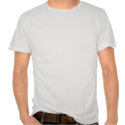To test theories on how both the conductance and optical properties of such nanotube-infused films depend on the length of the tubes, the NIST team made samples of “buckypaper” by mixing nanotubes in water and draining the water away through nanoscale filters to leave behind a delicate nanotube mat. The highly refined, length-sorted nanotube samples were produced by an efficient technique developed earlier by the NIST group (see “Spin Control: New Technique Sorts Nanotubes by Length”).
The NIST measurements validated one theory: buckypaper made of length-sorted carbon nanotubes closely follows the percolation theory for ideal two-dimensional sheets, with concentration threshold for conductivity getting lower as the tubes get longer. A sheet of 820 nanometer long nanotubes becomes conducting at an amazingly low 18 nanograms per square centimeter, the lowest yet reported. Interestingly, batches of short nanotubes or mixed-length batches form more three-dimensional networks that perform noticeably worse. On the other hand, predictions that optically the sheets would behave like thin metallic films turn out not to be the case. Optical properties are better predicted by the same general percolation theory, say the NIST researchers, which will provide a convenient theoretical framework for designing and engineering nanotech applications with these materials. ###
* D. Simien, J.A. Fagan, W. Luo, J.F. Douglas, K. Migler and J. Obrzut. Influence of nanotube length on the optical and conductivity properties of thin single-wall carbon nanotube networks. ACS Nano, Vol.. 2 , No. 9, 1879-1884.
Contact: Michael Baum michael.baum@nist.gov 301-975-2763 National Institute of Standards and Technology (NIST)
Tags: Nano or Nanotechnology and Nanotech















No comments:
Post a Comment